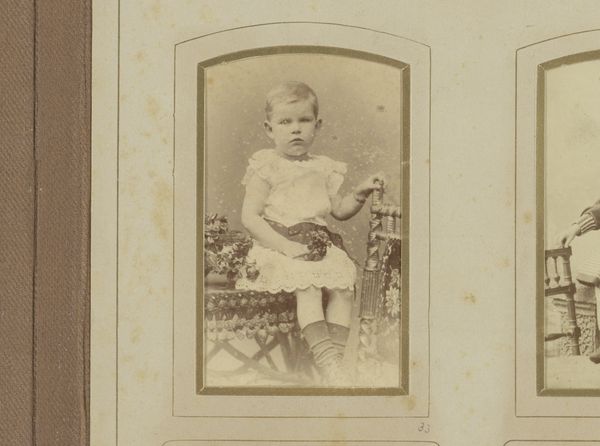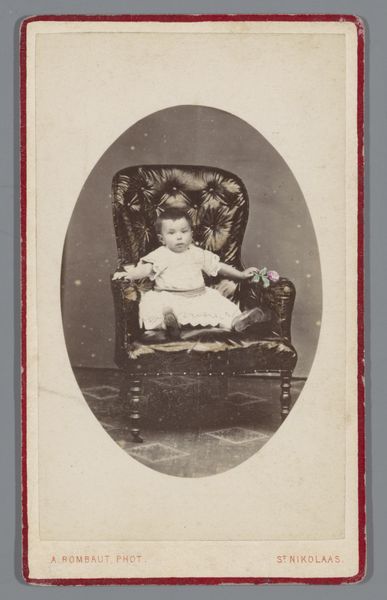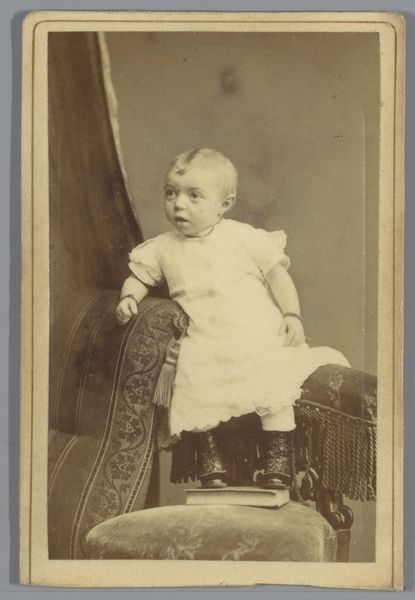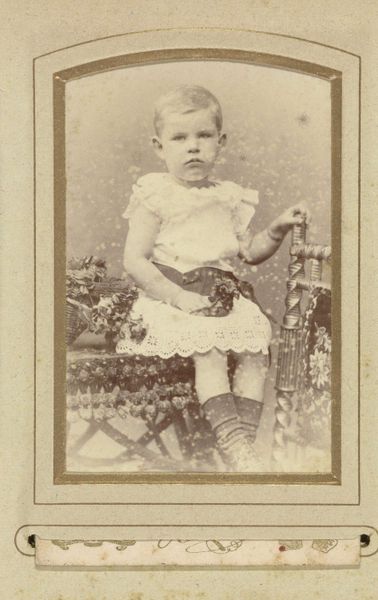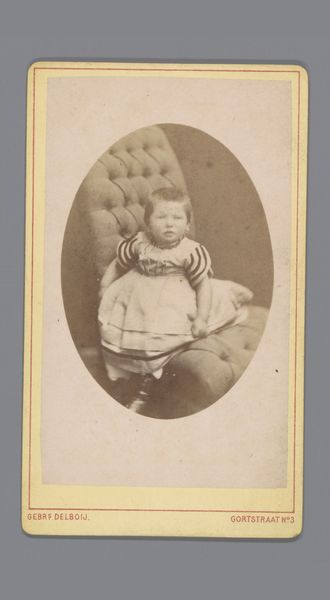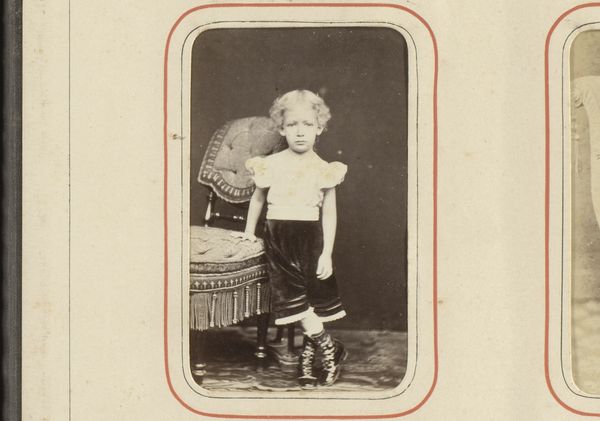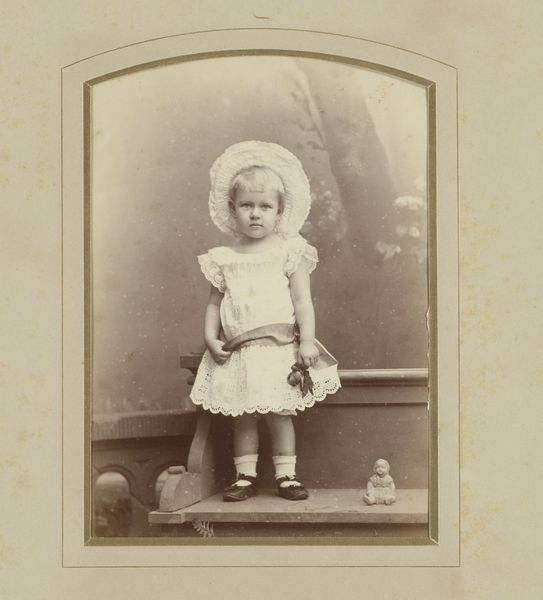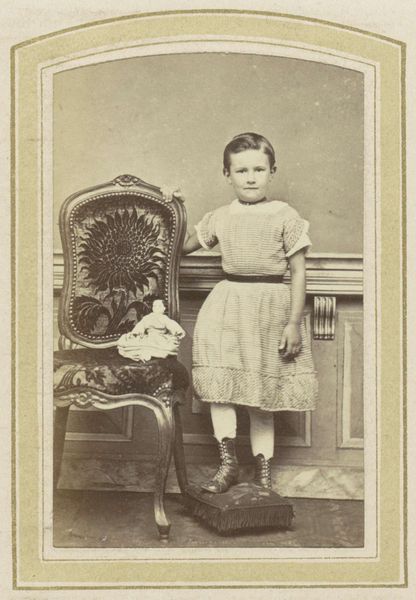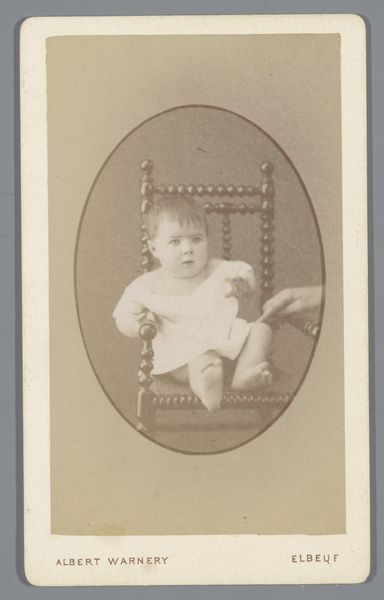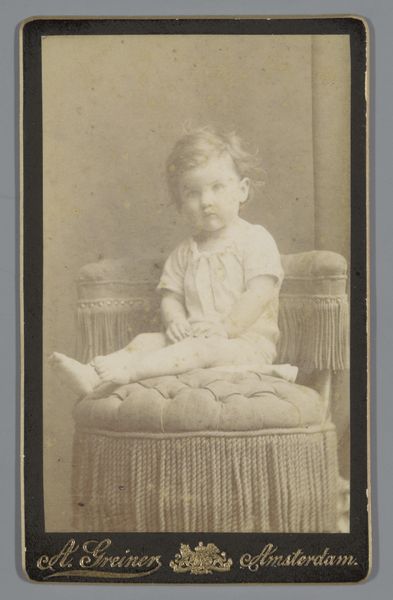
#
aged paper
#
toned paper
#
photo restoration
#
parchment
#
old engraving style
#
old-timey
#
19th century
#
warm-toned
#
golden font
#
watercolor
Dimensions: height 103 mm, width 63 mm
Copyright: Rijks Museum: Open Domain
Editor: We’re looking at "Portret van een onbekend kind" by R. Schütz, created sometime between 1870 and 1890. It’s quite charming – the child’s expression, the elaborate chair... it all feels very posed and deliberate. How do you interpret the visual elements of this piece? Curator: The composition immediately strikes me. Note the framing; the photographer’s choice to contain the image within these decorative borders impacts the reading. The tonality of the aged paper further emphasizes the photograph's material reality. Observe, also, the spiral details of the chair which add an interesting dimension to the child's placement. Editor: It’s interesting how you focus on the frame and the paper. It gives context, I guess. Curator: Precisely. These aren't incidental. Each element informs our reading of the subject, especially when considering the overall formality and stilted quality so common in late nineteenth century photography. It draws attention to the artificiality of representation itself, does it not? The pose, the lighting - it's all carefully constructed. Editor: So, you are saying the image is staged, not authentic. What is the key element? Curator: Undoubtedly the texture—look at the depth created from the contrast in light between the dark wooden chair, the background, and the white dress of the child. These tones and their interplay dominate the reading experience here. Editor: I see that now. It almost makes it abstract. Curator: In a sense, yes. Reducing the image to its pure forms reveals the essence of the photographic process as a constructed reality. Editor: That’s given me a completely new perspective! I’ll definitely look at images more closely from now on.
Comments
No comments
Be the first to comment and join the conversation on the ultimate creative platform.

